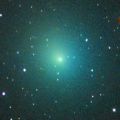
|
Now it is so bright as 4.7 mag (June 12, Marco Goiato). The apparent size is so large as 20 arcmin. Now it is brightest, and it keeps 4.5 mag in June. Now it is not observable in the Northern Hemisphere, but it will appear in the morning sky again at 5.5 mag in early July, then it keeps observable after that while the comet is fading gradually. In the Southern Hemipsphere, it keeps observable all the period until the comet fades out, although it will be low in mid June.
Date(TT) R.A. (2000) Decl. Delta r Elong. m1 Best Time(A, h)
May 31 8 14.36 -25 25.9 0.239 0.966 71 5.2 18:26 ( 93, 52)
June 7 7 8.67 -24 0.7 0.216 0.912 56 4.7 18:25 ( 82, 32)
|

|
Great outburst occured on Oct. 24, and it bacame a naked eye comet of 2 mag. It kept so bright as 5.5 mag still on Apr. 30 (Carlos Labordena), but it was extremely faint and difficult to see. The size was so large, the diameter was larger than 60 arcmin. It is not observable in this summer. But it will become observable in good condition in autumn again. The extremely faint large diffuse object may be detected with a best sky condition, around 5-6 mag with a diameter of 1 or 2 degrees.
Date(TT) R.A. (2000) Decl. Delta r Elong. m1 Best Time(A, h)
May 31 6 12.85 34 39.3 4.252 3.364 25 5.8 18:26 (128, -7)
June 7 6 24.05 34 19.4 4.317 3.393 21 5.8 18:25 (126, -9)
|
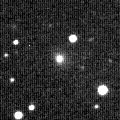
|
It is already very bright as 9.9 mag (June 6, Marco Goiato). Brightening well, and expected to be 6 mag in September. However, it keeps moving in the southern sky, and it is unobservable for a while in the Northern Hemisphere. It will appear in the evening sky at 6 mag in late September, but it keeps locating in the evening low sky until the end of 2008 when it fades out down to 9 mag. Then it turns to appear in the morning sky, and it keeps observable in the northern sky after that while fading gradually. In the Southern Hemisphere, it keeps observable until late October after this.
Date(TT) R.A. (2000) Decl. Delta r Elong. m1 Best Time(A, h)
May 31 5 57.39 -33 58.0 2.468 2.138 59 10.3 18:26 ( 67, 29)
June 7 6 7.94 -34 19.0 2.381 2.056 59 10.0 18:25 ( 65, 26)
|
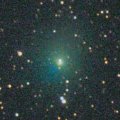
|
It reached up to 9.5 mag on Mar. 29 (Maik Meyer). Now it is fading slowly. It has already faded down to 10.7 mag (May 11, Marco Goiato). Diffuse object with a weak condensation. In the Northern Hemisphere, it will never be observable again. In the Southern Hemisphere, it keeps observable until it fades out.
Date(TT) R.A. (2000) Decl. Delta r Elong. m1 Best Time(A, h)
May 31 7 23.38 -4 25.0 1.863 1.428 49 11.2 18:26 (108, 31)
June 7 7 37.69 -7 57.0 1.931 1.480 49 11.4 18:25 (103, 31)
|
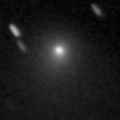
|
Now it is brightest at 10.9 mag (May 11, Marco Goiato). It will keep 11 mag for a long time until August. In the Southern Hemisphere, it keeps observable in good condition until summer. In the Northern Hemisphere, the altitude will never be higher than 30 degrees in the evening sky, and the comet will be unobservable in July. It will appear in the morning sky again at 13 mag at the end of 2008, then it keeps bright and observable for a while.
Date(TT) R.A. (2000) Decl. Delta r Elong. m1 Best Time(A, h)
May 31 10 18.17 -15 22.3 2.552 2.786 92 11.3 18:26 (151, 68)
June 7 10 27.53 -13 25.3 2.629 2.778 87 11.3 18:25 (144, 64)
|
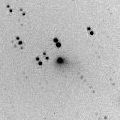
|
New bright comet. Brightening rapidly, and now it is so bright as 11.1 mag (June 7, Juan Jose Gonzalez). In the Northern Hemisphere, it keeps observable at 11-12 mag for a long time after this until autumn. It will move near by the Northern Pole from summer to autumn, and will be observable all night. Then it keeps observable until 2009 spring when the comet becomes faint. In the Southern Hemisphere, it is only observable until mid June.
Date(TT) R.A. (2000) Decl. Delta r Elong. m1 Best Time(A, h)
May 31 21 33.37 34 5.7 1.517 1.813 89 11.8 4:58 (180, 21)
June 7 21 40.19 40 36.7 1.480 1.788 89 11.6 4:38 (180, 15)
|

|
It will reach to 11 mag in summer. It must have already brightened up to 12 mag, but the comet was not observed recently. The condition in this apparition is bad. In the Southern Hemisphere, it keeps extremely low, or under the horizon, so it will not be observable. In the Northern Hemisphere, it is not observable until August when it appears in the morning sky at 11 mag. After August, it keeps observable and fading in the morning sky.
Date(TT) R.A. (2000) Decl. Delta r Elong. m1 Best Time(A, h)
May 31 3 20.43 4 41.7 2.344 1.483 24 11.8 5:29 (260, 6)
June 7 3 40.55 7 12.4 2.309 1.453 24 11.7 5:32 (256, 7)
|
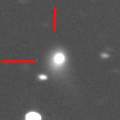
|
Now it is bright as 12.4 mag (June 7, Carlos Labordena), brightening almost as expected. It will reach to 10.5 mag and will be observable in good condition in 2008 autumn. It keeps observable, visible visually, brighter than 14 mag for one year until 2009 May.
Date(TT) R.A. (2000) Decl. Delta r Elong. m1 Best Time(A, h)
May 31 1 15.55 30 6.7 3.327 2.702 44 11.9 5:29 (221, 11)
June 7 1 28.45 32 7.5 3.245 2.670 47 11.8 5:32 (216, 11)
|
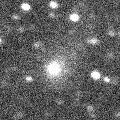
|
Now it is bright as 11.5 mag (June 7, Juan Jose Gonzalez). It keeps bright at 12 mag for a long time from 2008 spring to 2009 spring. However, it is only observable until August in the Northern Hemisphere because the comet moves southwards. It keeps observable for a long time in the Southern Hemisphere.
Date(TT) R.A. (2000) Decl. Delta r Elong. m1 Best Time(A, h)
May 31 17 31.21 -16 58.7 2.188 3.180 165 12.2 0:58 (180, 72)
June 7 17 18.02 -19 2.5 2.129 3.141 174 12.1 0:17 (180, 74)
|
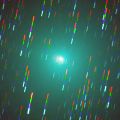
|
It passed near by Earth in early January, and it became a bright large object at 5.4 mag (Jan. 3, Seiichi Yoshida). It was visible with naked eyes. Now it is fading rapidly. It has already faded down to 11.3 mag (May 10, Marco Goiato). It has already moved away towards the southern sky, and it is no longer observable in the Northern Hemisphere. In the Southern Hemisphere, it keeps observable until it fades out.
Date(TT) R.A. (2000) Decl. Delta r Elong. m1 Best Time(A, h)
May 31 9 41.16 -60 32.2 1.528 2.013 102 12.8 18:26 ( 21, 61)
June 7 10 14.29 -58 55.9 1.599 2.085 103 13.3 18:25 ( 21, 63)
|

|
New bright comet, but extremely diffuse. It will approach to the sun down to 0.45 A.U. on June 19. So it will brighten very rapidly after this. In the Northern Hemisphere, it will be observable at 12 mag in the morning low sky from early June to mid June. Then it will never be observable again. In the Southern Hemisphere, it is observable only until late May. Now it brightened up to 11.7 mag (June 7, Juan Jose Gonzalez).
Date(TT) R.A. (2000) Decl. Delta r Elong. m1 Best Time(A, h)
May 31 1 36.33 33 35.6 0.735 0.658 40 13.5 5:29 (222, 6)
June 7 3 8.48 45 59.1 0.814 0.548 32 12.9 5:32 (221,-11)
|
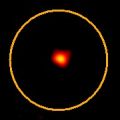
|
Now it is so bright as 11.6 mag (June 4, Alan Hale). It will be bright at 11-12 mag until July. However, it keeps locating extremely low for a while in the Northern Hemisphere. It will be getting higher gradually after late July, then it keeps observable while fading gradually.
Date(TT) R.A. (2000) Decl. Delta r Elong. m1 Best Time(A, h)
May 31 1 21.64 4 51.2 1.342 1.025 49 13.7 5:29 (240, 29)
June 7 1 52.86 8 38.8 1.350 0.997 47 13.2 5:32 (237, 26)
|
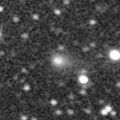
|
New comet. It is bright as 12.7 mag, and visible visually (May 12, Juan Jose Gonzalez). It keeps observable in good condition until autumn. But it is moving southwards gradually, and the altitude will be getting somewhat lower in the Northern Hemisphere. The calculation says it keeps bright at 13 mag for a while. However, it can be in a temporary outburst now, and it may be a very faint short periodic comet originally. It may fade out very rapidly after this.
Date(TT) R.A. (2000) Decl. Delta r Elong. m1 Best Time(A, h)
May 31 16 50.42 -14 31.2 1.442 2.449 171 13.5 0:17 (180, 70)
June 7 16 44.82 -14 55.6 1.449 2.457 171 13.5 23:39 (180, 70)
|
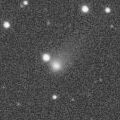
|
Now it is bright as 12.7 mag (Apr. 12, Marco Goiato). In the Northern Hemisphere, it will be getting lower gradually in the evening sky, and will be unobservable in late July. Then the comet will go southwards, so it will never be observable again in the Northern Hemisphere. In the Southern Hemisphere, it keeps observable in good condition for a long time until autumn.
Date(TT) R.A. (2000) Decl. Delta r Elong. m1 Best Time(A, h)
May 31 11 59.17 -2 30.7 2.572 3.084 110 13.6 19:22 (180, 58)
June 7 12 0.74 -3 38.0 2.641 3.066 105 13.7 18:56 (180, 59)
|

|
It was 15 mag on Jan. 14 (Michael Mattiazzo), brightening as expected. It will reach to 13.5 mag in the southern sky in spring and summer. In the Southern Hemisphere, it keeps observable for a long time after this. But in the Northern Hemisphere, it is not observable now. But it will appear in the morning sky at 15 mag in November, then it keeps observable while the comet will be fading slowly.
Date(TT) R.A. (2000) Decl. Delta r Elong. m1 Best Time(A, h)
May 31 5 43.78 -41 10.7 2.748 2.499 65 13.7 18:26 ( 58, 29)
June 7 6 8.12 -40 29.2 2.750 2.498 65 13.7 18:25 ( 59, 29)
|
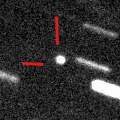
|
Now it is 13.8 mag (May 12, Juan Jose Gonzalez), brightening as expected and already visible visually. It is getting higher gradually in the morning sky. It is expected to reach to 6 mag in 2009 February. After this, it keeps observable until October when it becomes 11 mag.
Date(TT) R.A. (2000) Decl. Delta r Elong. m1 Best Time(A, h)
May 31 21 44.38 -12 33.3 2.856 3.279 105 13.9 5:10 (180, 68)
June 7 21 38.44 -12 58.4 2.655 3.204 113 13.7 4:36 (180, 68)
|

|
Now it is not observable. In the last season, it became so bright as 10 mag in 2008 January. It will appear in the morning sky in late August.
Date(TT) R.A. (2000) Decl. Delta r Elong. m1 Best Time(A, h)
May 31 6 35.57 27 20.7 6.901 6.029 28 14.0 18:26 (125, 1)
June 7 6 41.31 27 10.4 6.952 6.031 23 14.1 18:25 (122, -2)
|
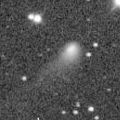
|
Now it is 13.5 mag (May 8, Marco Goiato), bright and visible visually. It keeps observable visually at 13 mag at high location for a while.
Date(TT) R.A. (2000) Decl. Delta r Elong. m1 Best Time(A, h)
May 31 15 55.46 21 57.3 4.915 5.680 135 14.6 23:17 (180, 33)
June 7 15 46.93 22 25.1 4.967 5.689 131 14.6 22:41 (180, 33)
|
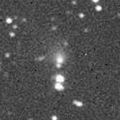
|
It is already bright as 14.7 mag and visible visually (Mar. 5, Seiichi Yoshida). It is expected to reach to 11 mag in 2009 summer. Because it moves in the northern sky, it keeps observable until it becomes brightest in the Northern Hemisphere. But it becomes low from April to June.
Date(TT) R.A. (2000) Decl. Delta r Elong. m1 Best Time(A, h)
May 31 3 42.83 57 26.7 5.640 4.864 36 14.8 5:29 (217,-26)
June 7 3 47.08 57 58.3 5.581 4.818 37 14.8 5:32 (214,-23)
|
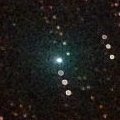
|
It brightened up to 8.5 mag on Jan. 6 (Alexandre Amorim). It kept bright until March, however, now it is getting diffuse and fading rapidly. It faded down to 12.0 mag on Mar. 30 (Marco Goiato). Now it is not observable. It will appear in the morning sky in September, but it will be fainter than 18 mag at that time.
Date(TT) R.A. (2000) Decl. Delta r Elong. m1 Best Time(A, h)
May 31 7 7.21 9 3.1 3.447 2.738 39 15.4 18:26 (117, 19)
June 7 7 13.55 9 54.1 3.603 2.820 34 15.7 18:25 (114, 15)
|
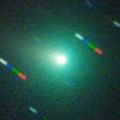
|
It brightened up to 8.3 mag on Feb. 6 (Juan Jose Gonzalez). However, now it is fading and getting diffuse very rapidly. It has already faded down to 14.0 mag (May 31, Hiroshi Abe). A small outburst was detected. In the Northern Hemisphere, it keeps observable in good condition until July when it becomes fainter than 18 mag.
Date(TT) R.A. (2000) Decl. Delta r Elong. m1 Best Time(A, h)
May 31 9 38.70 25 52.2 1.895 1.801 69 15.6 18:26 (159, 26)
June 7 9 56.45 24 6.5 2.009 1.861 66 16.1 18:25 (156, 27)
|

|
The nuclear magnitude was reported as 17.5 mag on June 7, but the total brightness will be already bright as 16 mag. It will be getting higher gradually after this. It will be observable at 15 mag in good condition until November.
Date(TT) R.A. (2000) Decl. Delta r Elong. m1 Best Time(A, h)
May 31 0 42.03 3 59.5 2.592 2.237 58 15.7 5:29 (232, 36)
June 7 0 55.03 5 6.4 2.511 2.220 61 15.6 5:32 (227, 38)
|
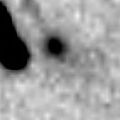
|
Now it is 15.3 mag (May 15, Ken-ichi Kadota). It keeps observable in good condition after this in the Northern Hemisphere. It will be fading gradually, and will be fainter than 18 mag in November.
Date(TT) R.A. (2000) Decl. Delta r Elong. m1 Best Time(A, h)
May 31 23 2.24 19 40.4 2.088 2.093 76 15.8 5:29 (197, 34)
June 7 23 8.76 23 28.2 2.053 2.119 79 15.8 5:32 (189, 31)
|
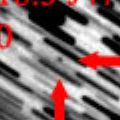
|
Now it is 16.5 mag (June 11, Juan Antonio Henriquez Santana). It will be brightening rapidly after this. It will reach up to 9 mag and keep bright for a long time from summer to autumn. In the Northern Hemisphere, it becomes low in the south at brightest, but it keeps observable until it fades out.
Date(TT) R.A. (2000) Decl. Delta r Elong. m1 Best Time(A, h)
May 31 19 7.19 13 9.8 0.762 1.602 128 16.4 2:32 (180, 42)
June 7 19 13.40 13 56.4 0.696 1.563 131 15.9 2:11 (180, 41)
|
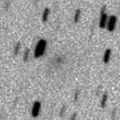
|
Now it is 16.8 mag (June 9, Yasukazu Ikari). It reaches to 16 mag from May to July, and observable in good condition.
Date(TT) R.A. (2000) Decl. Delta r Elong. m1 Best Time(A, h)
May 31 15 56.16 80 16.0 1.691 1.777 77 16.1 23:11 (180,-25)
June 7 15 5.48 75 25.3 1.643 1.777 80 16.1 21:57 (180,-20)
|

|
It is expected to reach up to 7.5 mag in winter, and will be observable in good condition. However, this comet has not been observed since 1986. It is predicted to be already brightening as 16 mag. However, it was not detected, fainter than 18 mag, on May 31 (Katsumi Yoshimoto). The condition of this apparition is good. It keeps observable for a long time until 2009 early summer both in the Northern Hemisphere and Southern Hemisphere.
Date(TT) R.A. (2000) Decl. Delta r Elong. m1 Best Time(A, h)
May 31 20 47.27 -22 39.4 1.998 2.673 121 16.5 4:13 (180, 78)
June 7 20 49.21 -22 40.4 1.862 2.610 127 16.2 3:47 (180, 78)
|
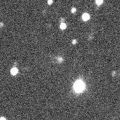
|
Now it is 16.0-16.5 mag (May 22, Michael Jager). It will be observable at 16-17 mag from April to July. It will be fainter than 18 mag in August. It keeps locating in the evening sky all time.
Date(TT) R.A. (2000) Decl. Delta r Elong. m1 Best Time(A, h)
May 31 10 0.11 8 10.2 0.907 1.231 79 16.3 18:26 (158, 45)
June 7 10 24.90 5 45.8 0.916 1.236 79 16.4 18:25 (157, 47)
|
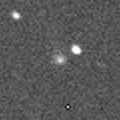
|
Now it is 16.8 mag (Feb. 29, Ken-ichi Kadota). It keeps 16 mag for one year from 2008 spring to 2009 spring. In the Northern Hemisphere, it had been observable in good condition for a long time, but it will be too low to observe in July. Then the comet goes southwards, and it will never observable again, except for locating extremely low in the morning sky from November to December.
Date(TT) R.A. (2000) Decl. Delta r Elong. m1 Best Time(A, h)
May 31 10 51.57 3 25.4 3.756 3.943 93 16.3 18:26 (175, 52)
June 7 10 50.10 2 23.8 3.845 3.916 86 16.4 18:25 (164, 52)
|
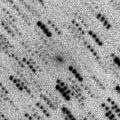
|
In April, it became so bright as 11.3 mag (Apr. 12, Marco Goiato). But CCD observers reported it was faint as 15 mag. It was difficult to see because extremely diffuse. In the Northern Hemisphere, it had been low until March, but now it locates high. But it is already fading. Mieczyslaw L. Paradowski reported it was 12.8 mag visually on June 6. However, no other visual observations have been reported since mid April.
Date(TT) R.A. (2000) Decl. Delta r Elong. m1 Best Time(A, h)
May 31 20 37.43 23 17.2 0.743 1.406 105 16.6 4:03 (180, 32)
June 7 20 36.30 25 26.5 0.765 1.456 109 16.8 3:34 (180, 30)
|

|
It will be bright at 9-10 mag for a long time from spring to autumn in 2009. An outburst occured in February, and it brightened up to 16.0 mag (Feb. 28, Mt. Lemmon Survey) although it was predicted to be so faint as 19 mag. It had been reported brighter than predicted until early April. However, it returned to be so faint, fainter than 18 mag, after mid April.
Date(TT) R.A. (2000) Decl. Delta r Elong. m1 Best Time(A, h)
May 31 10 0.16 15 34.6 3.414 3.334 76 16.9 18:26 (161, 37)
June 7 10 4.94 15 6.7 3.476 3.297 71 16.9 18:25 (155, 36)
|
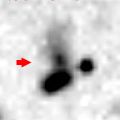
|
Now it is 17.2 mag (May 10, Gustavo Muler). It keeps observable while the comet will be brightening gradually after this. It will reach up to 14.5 mag in autumn. However, then it locates low in the evening sky, and it will be unobservable soon in December.
Date(TT) R.A. (2000) Decl. Delta r Elong. m1 Best Time(A, h)
May 31 15 44.83 -3 58.4 1.876 2.844 158 17.1 23:07 (180, 59)
June 7 15 39.37 -3 34.8 1.860 2.799 152 16.9 22:34 (180, 59)
|
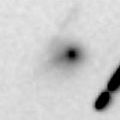
|
An outburst occured in late May, and it brightened up to 14.6 mag (May 23, Gustavo Muler). It is still bright as 15.7 mag (May 25, Ken-ichi Kadota). However, it will return to be faint as 16-17 mag soon. It will reach to 14 mag in autumn, but it locates extremely low in the Northern Hemisphere. However, it keeps higher than 30 degree even in the Northern Hemisphere until August.
Date(TT) R.A. (2000) Decl. Delta r Elong. m1 Best Time(A, h)
May 31 10 48.43 33 52.5 1.710 1.848 81 17.2 18:26 (177, 21)
June 7 10 56.90 31 59.4 1.722 1.796 77 17.1 18:25 (173, 23)
|
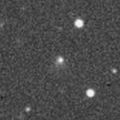
|
Now it is 16.0-16.5 mag (May 22, Michael Jager), brightened as expected. After this, it will be getting fainter slowly and getting lower slowly in the evening sky.
Date(TT) R.A. (2000) Decl. Delta r Elong. m1 Best Time(A, h)
May 31 10 59.59 25 56.0 2.318 2.469 86 17.2 18:26 (179, 29)
June 7 11 7.53 24 24.2 2.395 2.470 82 17.3 18:25 (174, 31)
|
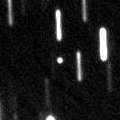
|
Peculiar asteroid moving on a cometary orbit. It reached up to 15.0 mag on Mar. 11 (Katsumi Yoshimoto). It has passed the perihelion in late January, but still completely asteroidal. It is already going away from the sun and fading. In the Northern Hemisphere, it keeps observable until July when it becomes fainter than 18 mag.
Date(TT) R.A. (2000) Decl. Delta r Elong. m1 Best Time(A, h)
May 31 11 36.91 8 10.1 1.816 2.251 101 17.2 19:00 (180, 47)
June 7 11 46.69 8 20.5 1.937 2.295 97 17.4 18:43 (180, 47)
|
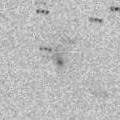
|
Now it is 16.8 mag (May 25, Ken-ichi Kadota). It keeps observable in good condition while the comet will be fading slowly.
Date(TT) R.A. (2000) Decl. Delta r Elong. m1 Best Time(A, h)
May 31 13 4.84 65 10.1 2.779 2.862 84 17.3 20:27 (180,-10)
June 7 12 57.75 61 29.5 2.828 2.882 82 17.4 19:52 (180, -6)
|
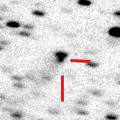
|
It was observed at 16.5-17 mag in 2006 and 2007. Because it is a very distant comet, it is observable at 17 mag still in 2008 in good condition.
Date(TT) R.A. (2000) Decl. Delta r Elong. m1 Best Time(A, h)
May 31 19 17.07 41 1.6 5.903 6.265 106 17.3 2:43 (180, 14)
June 7 19 9.77 42 1.7 5.883 6.283 108 17.3 2:08 (180, 13)
|
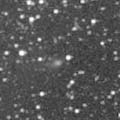
|
Now it is brightest at 17 mag. But it will be fading gradually, and it will be fainter than 18 mag in July.
Date(TT) R.A. (2000) Decl. Delta r Elong. m1 Best Time(A, h)
May 31 14 24.66 -12 44.3 3.332 4.228 148 17.4 21:46 (180, 68)
June 7 14 13.55 -12 15.2 3.447 4.263 138 17.5 21:08 (180, 67)
|

|
It had been observed at 16.5 mag for a long time from 2005 to 2007. Now it is fading. But it keeps observable at 17.5 mag in good condition for a long time until July.
Date(TT) R.A. (2000) Decl. Delta r Elong. m1 Best Time(A, h)
May 31 13 54.87 14 49.2 8.001 8.645 126 17.5 21:17 (180, 40)
June 7 13 52.52 14 23.6 8.109 8.672 120 17.6 20:47 (180, 41)
|

|
Although it was so faint as 20 mag still in January, it brightened rapidly and reached up to 17.1 mag now (May 15, Yasukazu Ikari). It is observable in good condition until summer.
Date(TT) R.A. (2000) Decl. Delta r Elong. m1 Best Time(A, h)
May 31 14 38.55 1 57.2 2.861 3.723 143 17.8 22:01 (180, 53)
June 7 14 35.73 1 42.7 2.914 3.720 136 17.9 21:30 (180, 53)
|

|
No observations have been succeeded since 2007 July. It was predicted to be so bright as 14 mag now. But actually, it is fainter than 19 mag and not detectable (June 1, Gustavo Muler). It will locate in good condition from spring to summer. But it seems to have already disappeared.
Date(TT) R.A. (2000) Decl. Delta r Elong. m1 Best Time(A, h)
May 31 22 1.52 1 56.5 1.733 2.104 96 20.1 5:26 (180, 53)
June 7 22 8.99 4 2.3 1.692 2.125 100 20.2 5:06 (180, 51)
|

|
The condition in the Northern Hemisphere was very good in first half of May, and it was observed at 16 mag. It will approach to the sun down to 0.1 A.U. on June 17. If it shows a cometary activity, it may become much brighter than this ephemeris. However, it is not observable on the earth.
Date(TT) R.A. (2000) Decl. Delta r Elong. m1 Best Time(A, h)
May 31 5 7.79 37 20.3 0.422 0.623 17 23.2 18:26 (122,-19)
June 7 5 3.08 28 56.8 0.598 0.425 6 27.6 18:25 (111,-21)
|
|
![]()
 C/2006 OF2 ( Broughton )
C/2006 OF2 ( Broughton ) C/2007 G1 ( LINEAR )
C/2007 G1 ( LINEAR ) 8P/Tuttle
8P/Tuttle C/2008 J4 ( McNaught )
C/2008 J4 ( McNaught ) 15P/Finlay
15P/Finlay P/2008 J2 ( Beshore )
P/2008 J2 ( Beshore ) C/2007 B2 ( Skiff )
C/2007 B2 ( Skiff ) C/2006 U6 ( Spacewatch )
C/2006 U6 ( Spacewatch ) C/2007 N3 ( Lulin )
C/2007 N3 ( Lulin ) 29P/Schwassmann-Wachmann 1
29P/Schwassmann-Wachmann 1 C/2005 L3 ( McNaught )
C/2005 L3 ( McNaught ) C/2006 W3 ( Christensen )
C/2006 W3 ( Christensen ) C/2007 T1 ( McNaught )
C/2007 T1 ( McNaught ) 46P/Wirtanen
46P/Wirtanen 61P/Shajn-Schaldach
61P/Shajn-Schaldach C/2008 J6 ( Hill )
C/2008 J6 ( Hill ) 6P/d'Arrest
6P/d'Arrest C/2007 W3 ( LINEAR )
C/2007 W3 ( LINEAR ) 85P/Boethin
85P/Boethin 79P/du Toit-Hartley
79P/du Toit-Hartley C/2007 M2 ( Catalina )
C/2007 M2 ( Catalina ) 26P/Grigg-Skjellerup
26P/Grigg-Skjellerup 22P/Kopff
22P/Kopff 68P/Klemola
68P/Klemola 7P/Pons-Winnecke
7P/Pons-Winnecke 180P/2006 U3 ( NEAT )
180P/2006 U3 ( NEAT ) 2005 WY3
2005 WY3 C/2008 H1 ( LINEAR )
C/2008 H1 ( LINEAR ) C/2005 S4 ( McNaught )
C/2005 S4 ( McNaught ) C/2007 M3 ( LINEAR )
C/2007 M3 ( LINEAR ) C/2002 VQ94 ( LINEAR )
C/2002 VQ94 ( LINEAR ) 187P/2007 E3 ( LINEAR )
187P/2007 E3 ( LINEAR ) C/2007 K3 ( Siding Spring )
C/2007 K3 ( Siding Spring ) 2008 HW1
2008 HW1![]()
































